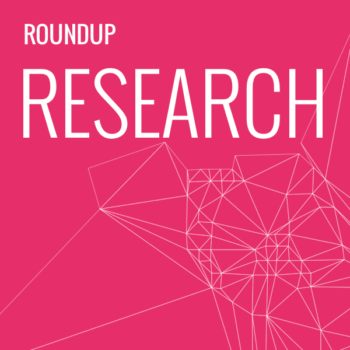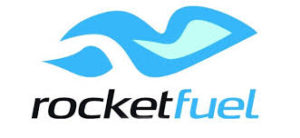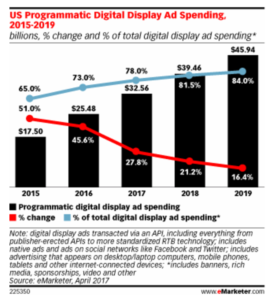Millennials Love AI; Strength in Programmatic
by Hugh Williams on 20th Apr 2017 in News

ExchangeWire Research’s weekly roundup brings you up-to-date research findings from around the world, with additional insight provided by Rebecca Muir, head of research and analysis, ExchangeWire. In this week’s edition: Millennials love AI; Strength in programmatic; and Fickle holiday customers.
Millennials love AI
Over two-thirds of millennials see the benefits of brands using AI to help inform and direct their buying decisions, according to research by Predictive Marketing company Rocket Fuel.
As the volume of products and services available online continues to grow, consumers are increasingly looking to brands for a more personalised experience; 80 % of 25-34 year olds surveyed stated that they see value in brands engaging them with personalised advertising and offers. Additionally, 62% see the value of using AI to make suggestions on products or services that they might want based on their interests.
% of 25-34 year olds surveyed stated that they see value in brands engaging them with personalised advertising and offers. Additionally, 62% see the value of using AI to make suggestions on products or services that they might want based on their interests.
Overall, the AI survey finds a positive attitude towards artificial intelligence. Nearly two-thirds said they find it an exciting development in technology (growing to 81% for males aged 18-34).
Almost seven-in-ten (69%) agree it has become a part of everyday life. In terms of its application, those surveyed said they were aware of it being used in military (64%), in the home (61%), and in media, advertising, and marketing combined (61%). Of those who are aware of its use in advertising, 57% said they view it as a positive force.
Strength in programmatic
Nearly four of every five US digital display dollars will transact programmatically in 2017, totaling USD$32.56bn (£25.39bn), according to eMarketer.
 By the end of the forecast period, that share will rise to 84.0%, leaving little doubt that buyers and sellers are continuing to invest in automated ad buying. All this despite the negative press around programmatic advertising following the YouTube ad controversy.
By the end of the forecast period, that share will rise to 84.0%, leaving little doubt that buyers and sellers are continuing to invest in automated ad buying. All this despite the negative press around programmatic advertising following the YouTube ad controversy.
For ad buyers and sellers, the desire and need for greater control are moving them towards more private setups. Already, 74.5% of US digital display ad dollars transacted programmatically will go to private marketplaces and programmatic direct setups.
In fact, the share of programmatic purchases made via open exchanges is declining, while the share transacted via programmatic direct is growing. This year, programmatic direct will represent 56% of programmatic display spend, while 44% will be bought via RTB.
Video is one area that has benefited from such advancements and controls. Last year marked the first time in which more than half of all US digital video ad dollars traded via automation; that portion will grow another 42.3% this year to USD$9.13bn (£7.12bn).
Fickle holiday customers
Holiday season is not the merriest time to acquire repeat customers, according to Monetate’s Ecommerce Quarterly report for Q4 2016.
Only 1% of those customers who were acquired during the Q4 2015 holiday season were present on the same site in December 2016. Customers on mobile phones during acquisition returned at a rate of 12% in 2016, versus those on desktops, who returned at a rate of only 7%.
Aside from 'unknown', direct traffic held the highest AOV, the next highest referring channel is search, followed by email, and, lastly, social.

While the AOV for email referrers is lower than other channels, return conversion and revenue per visitor are the highest. Visitors acquired by email in Q4 of 2015 had almost double the return rate to the same site during 2016 than direct, search, and social. Email also drove the highest revenue per visitor.
Artificial IntelligenceDigital MarketingProgrammaticTargeting








Follow ExchangeWire